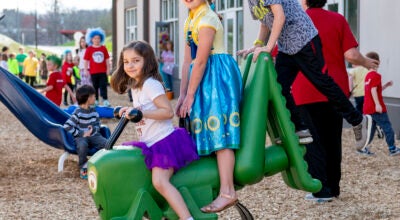Relating to children after tragedy
Published 12:00 am Monday, December 17, 2012
Dr. Phyllis Post and Dr. Peggy Ceballos, professors of counseling at the University of North Carolina at Charlotte, offered the following information on helping children grieve in the wake of last week’s mass shooting at Sandy Hook Elementary School in Newtown, Conn.
Information to help adults relate to children following Sandy Hook tragedy
We want to express our sadness and shock at the terrible tragedy at Sandy Hooks Elementary School. We hope the following information can help adults as they assist children in their healing process.
Grief occurs when there is a disruption or loss that is beyond the person’s control. This experience causes pain and discomfort. It can affect the person’s thoughts, feelings, and behaviors. While grief universal, the experience is unique for each individual (Fiorini & Mullen, 2006).
The grieving process for children is different from that of adults, so don’t be surprised if children do not seem interested in the event that happened or do not express any emotions about the incident. The developmental level of the child and cultural context have a direct impact about how they cognitively and emotionally process grief. Children who are under the age of 8 may lack the cognitive ability to understand that death is permanent. They can have magical thinking, and believe that they caused events to happen.
On the other hand, children may react to this news. Some behaviors you may see are withdrawal, restlessness, impulsivity, lack of focus, extreme talkativeness, disorganization, and/or recklessness. While at times these may not necessarily be cause for concern, they could be if the behaviors seem to be out of character for the child, if the child is having trouble returning to equilibrium, or if a cluster of these behaviors is occurring simultaneously (Goldman, 2006). In this case, be sure to contact a mental health professional.
There is no need to bring this up if you do not think they are even aware of the situation. However, if children bring up the subject or if you notice any changes, respond honestly to them. Remember that school-age children understand that death happens to older people, but have a more difficult time understanding when it happens to someone young.
Following are some guidelines about how to respond:
• Listen to your child.
• Think about why the child has asked you the question, and respond to the underlying feeling. Make every effort to create a safe environment where children can express all of their feelings.
• Do not give a child false assurance by saying this will never happen to them. Instead tell them that you will do everything you can to keep them safe and that events like this are unusual and do not happen often.
• If you choose to explain the concept of death, be true to your family’s culture and values.
• Provide children with a positive outlet to express their emotions, such as drawing, playing with their toys, journaling, writing letters, talking, making a collage, or through music.
• Go back to your routines. Children like predictability and consistency. It makes them feel safe.
• Limit exposure to TV coverage of the event.
• Remember that children’s expressions may vary from day to day, moment to moment. It is not unusual for a child to be emotional/curious in one moment and, shortly thereafter, be off playing, seemingly carefree.
Fiorini, J. J. & Mullen, J. A. (2006). Counseling children and adolescents through grief and loss. Champaign, IL: Research.
Goldman, L. (2006). Best practice grief work with students in schools. In C. Franklin, M.B. Harris, & P. Allen-Meares (Eds.), The school services sourcebook: A guide for school based professionals (pp. 567-575). NewYork: Oxford Press.





